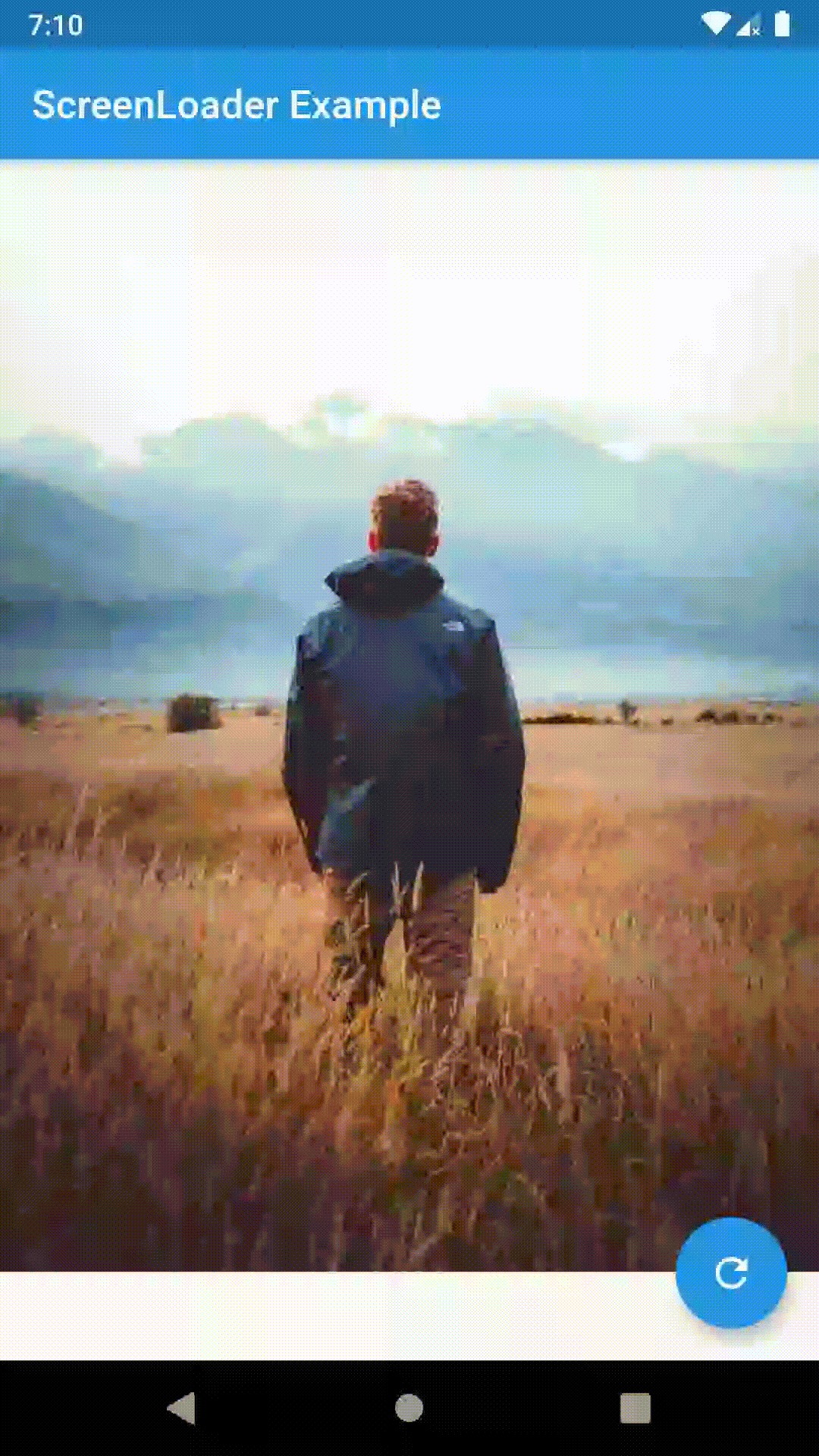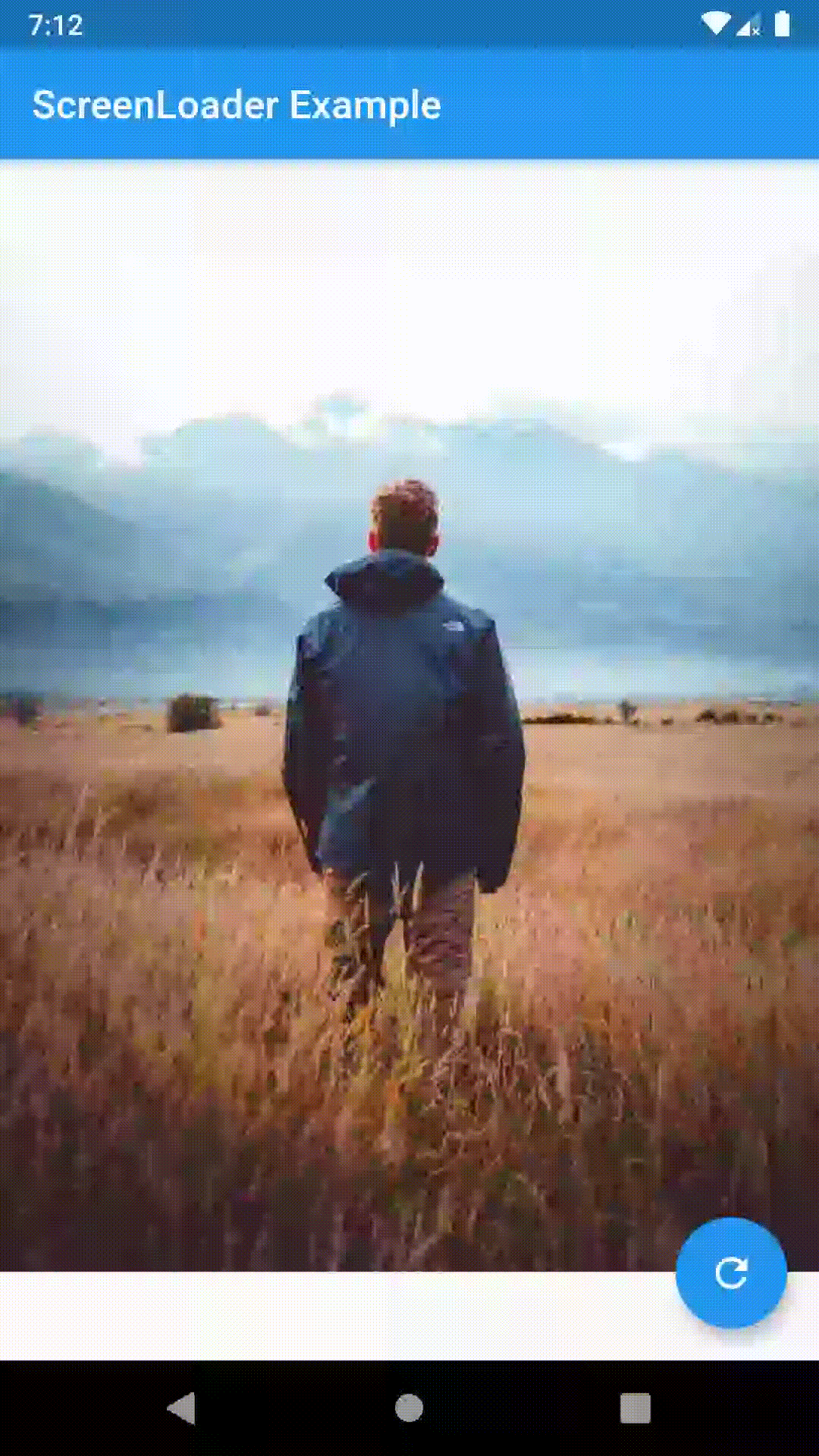- With the help of
stream_mixin, it shows and hides the loader without updating the state of the widget which increases the performance - It does not push any sort of widget to navigation stack, this helps in not messing up the navigation stack and context
- Easy to use, just use your screen with
ScreenLoadermixin and wrap the widget withloadableWidget - The loader is customizable. You can use any widget as a loader
- You can configure same loader for all the screens at once
- You can also configure different loader for different screens
- Use your screen with the
ScreenLoadermixin - Wrap the widget with
loadableWidget - Use
performFuturefunction to show loader while your future is being performed
Simply overide loader() method
loader() {
// here any widget would do
return AlertDialog(
title: Text('Wait.. Loading data..'),
);
}
void main() {
configScreenLoader(
loader: AlertDialog(
title: Text('Gobal Loader..'),
),
bgBlur: 20.0,
);
runApp(MyApp());
}- Local loader: the one you override in your widget
- Global loader: the one you specify in
configScreenLoader. Note: if you don't overridelocal(), this loader will be used - Default loader: if you don't specify global loader or override local loader, this loader will be used
ScreenLoaderAppwidget is removed. Now no need to wrap your App around any widget just to set the global configurations. Instead callconfigScreenLoader()beforerunApp()
-void main() => runApp(MyApp());
+void main() {
+ configScreenLoader(
+ loader: AlertDialog(
+ title: Text('Gobal Loader..'),
+ ),
+ bgBlur: 20.0,
+ );
+ runApp(MyApp());
+}
class MyApp extends StatelessWidget {
@override
Widget build(BuildContext context) {
- return ScreenLoaderApp(
- app: MaterialApp(
- debugShowCheckedModeBanner: false,
- title: 'Screen Loader',
- theme: ThemeData(
- primarySwatch: Colors.blue,
- ),
- home: Screen(),
- ),
- globalLoader: AlertDialog(
- title: Text('Gobal Loader..'),
+ return MaterialApp(
+ debugShowCheckedModeBanner: false,
+ title: 'Screen Loader',
+ theme: ThemeData(
+ primarySwatch: Colors.blue,
),
- globalLoadingBgBlur: 20.0,
+ home: Screen(),
);
}
}- Instead of replacing the
buildfunction withscreenuse thebuildfunction itself and wrap the widget you want to show loader on with theloadableWidget.
-class _ScreenState extends State<Screen> with ScreenLoader<Screen> {
+class _ScreenState extends State<Screen> with ScreenLoader {
@override
loader() {
return AlertDialog(
@@ -49,17 +51,19 @@ class _ScreenState extends State<Screen> with ScreenLoader<Screen> {
}
@override
- Widget screen(BuildContext context) {
- return Scaffold(
- appBar: AppBar(
- title: Text('ScreenLoader Example'),
- ),
- body: _buildBody(),
- floatingActionButton: FloatingActionButton(
- onPressed: () async {
- await this.performFuture(NetworkService.getData);
- },
- child: Icon(Icons.refresh),
+ Widget build(BuildContext context) {
+ return loadableWidget(
+ child: Scaffold(
+ appBar: AppBar(
+ title: Text('ScreenLoader Example'),
+ ),
+ body: _buildBody(),
+ floatingActionButton: FloatingActionButton(
+ onPressed: () async {
+ await this.performFuture(NetworkService.getData);
+ },
+ child: Icon(Icons.refresh),
+ ),
),
);
}- PRs are welcome
- Please raise issues on https://github.com/arnold-parge/screen_loader.
- Open for suggestions ❤️


